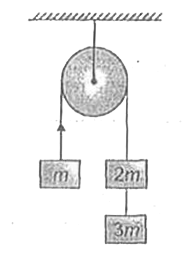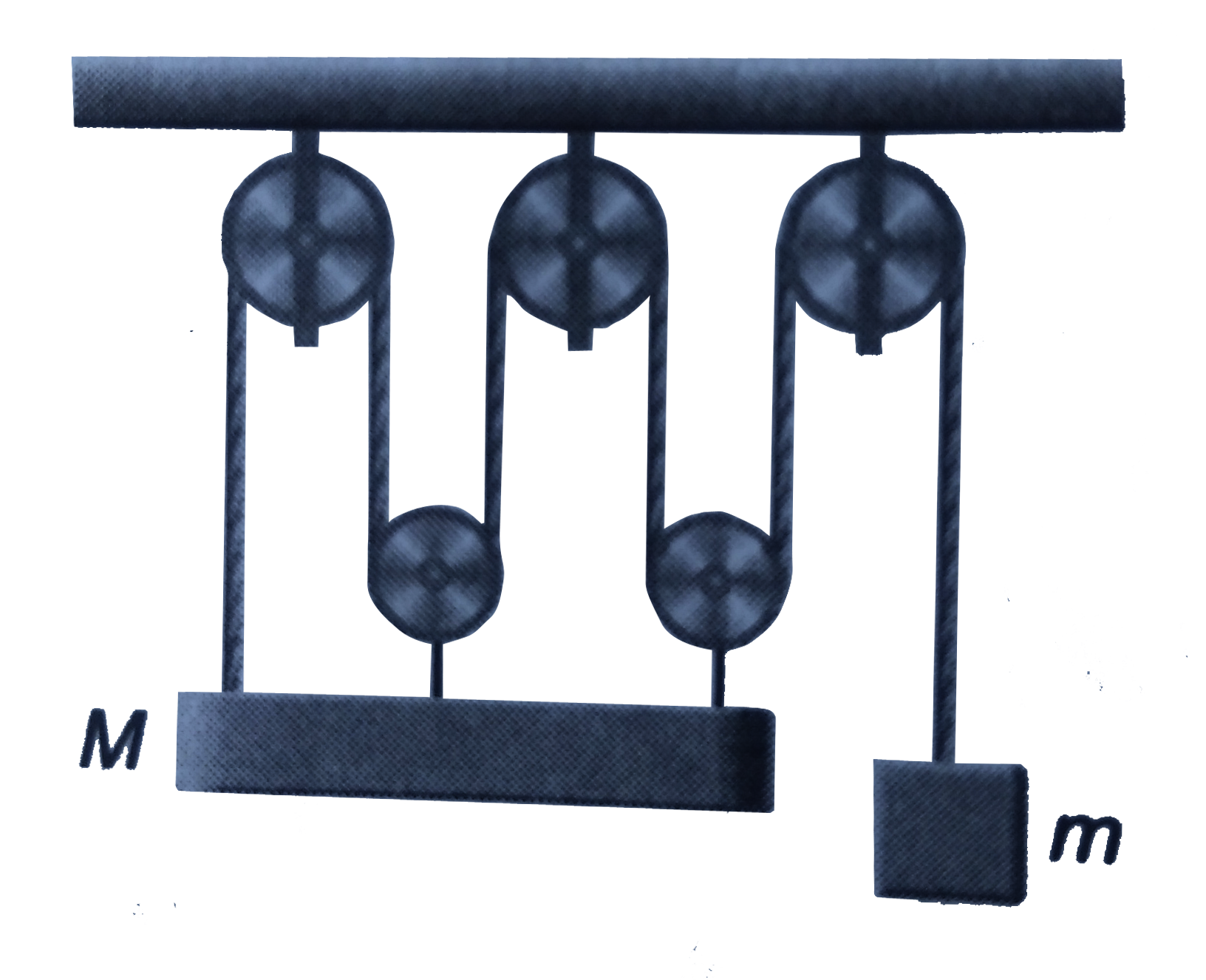Find the acceleration of the block of mass m. Assume pulleys are massless and frictionless.

g/3
2g3
g2
None
The correct Answer is:B
TS1−2TS2=0
a1=2a2
2×(T=m×2a)
2mg−2T=2ma
2mg=6ma
a=g3

Topper's Solved these Questions
Similar Questions
Find the accelerations of two blocks. Assume pulleys and strings are massless and frictionless. Also assume the string to be inextensible.

View SolutionFind the relation between acceleration of the two blocks m1andm2. Assume pulleys are massless and frictionless and the strings are inextensible .

View Solution
Knowledge Check
In the figure given below, with what accelerating does the block of mass m will move? ( Pulley and strings are massless and frictionless)
Ag3B2g5C2g3Dg2
In the given arrangement, mass of the block is M and the surface on which the block is placed is smooth. Assuming all pulleys to be massless and frictionless, strings to be inelastic and light, R1,R2 and R3 to be light supporting rods, then acceleration of point P will be (A is fixed):A0B∞C4FmD2Fm
In the figure given below, with what acceleration does the block of mass m will move? (Pulley and strings are massless and frictionless)

View SolutionFind the acceleration of two masses as shown in figure . The pulley are light and frictionless and string are light and frictionless and string are light and inextensible.

View SolutionFind the acceleration blocks in fig. The pulley and the string are massless.

View SolutionTwo blocks 'A' and 'B' having masses mA and ma, respectively are connectd by an arrangement shown in the figure. Calculate the downward acceleration of the block B. Assume the pulleys to be massless. Under what condition will block A have downward acceleration?

View SolutionA constant force F=20N acts on a block of mass 2kg which is connected to two blocks of masses m1=1.0kg and m2=2kg as shown in Calculate the accelerations produced in ball the three blocks Assume pulleys are frictionless and weightless
 .
.
View SolutionFind the acceleration of the block of mass m in the arrangement shown in the following figures. The masses of the pulleys and the threads, as well as the friction are assumed to be negligible.

View Solution

